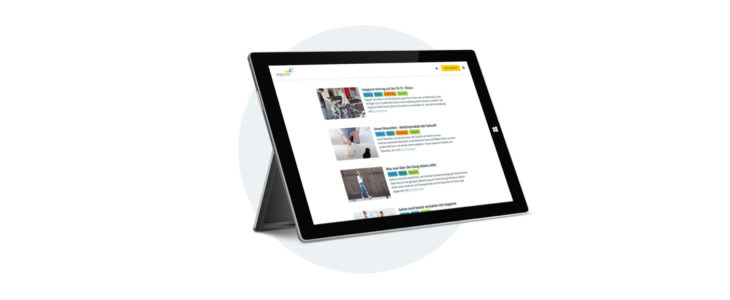Telemedicine can no longer be stopped!

The corona pandemic has dramatically changed our everyday lives. The entire medical community has also been affected by the crisis. From one day to the next, people were unable to continue their therapy programs because doctors and physiotherapist were unable to meet with their patients. Not only did that hinder patient recovery, it also prevented medical practitioners from earning income. The Covid-19 crisis forced them to rethink their business model and find a way to treat a person without personal contact.
Trust in telemedicine worldwide
The global crisis has made it necessary to break new and innovative ground in medicine as well. Confidence in telemedicine and digital solutions is strengthened by the current global challenge. On March 2020, a study by the SSCG Media Group showed that 53% of general practitioners in the US were using telemedicine for the first time due to Covid-19 restrictions. Ann Mond Johnson, CEO of the American Telemedicine Association (ATA), believes that this shared positive experience of telehealth will not go away. Globally, telemedicine was a $45.5 billion market in 2019. Global Market Insight estimates that it will grow to $175.5 billion in 2026.¹
In Germany, too, there are successful experiences with telemedicine that paints an optimistic picture of its future use. Due to the Corona crisis, for example, the University Hospital Aachen is focusing on telemedicine and a virtual hospital. Clinics throughout the country can draw on the telemedical expertise of the University Hospitals of Aachen and Münster in the areas of intensive care medicine and infectiology. ²
Telemedicine can improve the quality and the efficiency of the healthcare system dramatically. A conventional control in a clinic ties staff for up to 27 minutes. A telemedical check, on the other hand, only takes 1.3 minutes on average. One third of health expenditure in Austria is thus incurred in the inpatient sector. If telemedicine were to be introduced throughout the country, the entire healthcare system would be relieved of this costly burden, which would free up valuable capacities.³
stappone as role in telerehabilitation
The stappone sensor sole is designed specifically to drive the telerehabilitation movement.The data of the foot pressure load of patients can be transferred directly to the PC of the treating practitioner. In this way, for example, gait and movement analysis can be carried out without physical contact and progress can be measured, but new possibilities also arise for physiotherapists. Via video conference and the live data from stappone, physiotherapists can train their patients in a target manner and make accurate correction recommendations.
A huge opportunity
In times of and after Corona, the skepticism about digital solutions and telemedicine will dwindle more and more. Dr. Karapetian, a Californian doctor, says it often takes a crisis to get people involved with new ways of doing things.4 Telemedicine is an enormous opportunity for us all.
² https://www.ztg-nrw.de/aktuelles-trends

